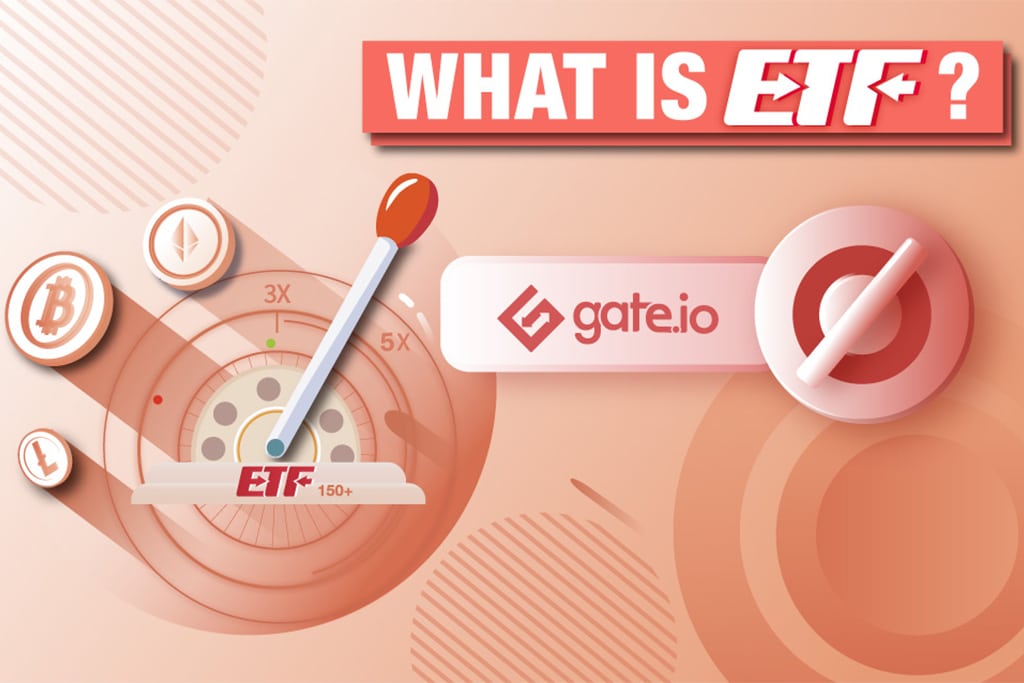
Please check out latest news, expert comments and industry insights from Coinspeaker's contributors.
Leveraged ETFs provide a new option for investors who want to invest with small capital costs, zero risks of liquidation, and harvest higher returns.

Leveraged ETFs entered the cryptocurrency world after 15 years of practice in the traditional financial field. They used small funds to leverage large returns, diversify risks, and have significant advantages without margin, and are gradually being sought after by more investors. Since the end of 2019, the first cryptocurrency exchange launched leveraged ETF products, mainstream exchanges around the world have also been launched, and they have also won the favor of investors in the crypto world. Data shows that the highest single-day trading of Gate.io‘s leveraged ETF products in August exceeded US$420 million, accounting for about 53% of the total spot trading volume. What exactly is a leveraged ETF? Why is it so popular? This article will explain in detail one by one.
Leveraged ETF (Leveraged ETF), also known as long or long ETF (Bull ETF), is a highly sought-after investment method in traditional finance. Through the use of leveraged investment tools such as stock index futures and swap contracts, the target index can be tracked daily to a certain fixed leverage ratio so if it moves in your direction you will continue to receive income in the same percentage ratio regardless of price. In the summer of 2006, ProShare issued the first batch of leveraged ETFs based on the Nasdaq and S&P 500 in the US market. Since then, leveraged ETFs have gradually become the most popular variety in the market. For example, Nasdaq’s 3x leveraged product means that if the Nasdaq index rises by 1% one day, theoretically the net value of the leveraged ETF would rise by 3% on that day, which can magnify investment returns. In addition, there are reverse leveraged ETFs, also known as short or short ETFs, which are a multiple of the reverse of the daily tracking target index. The Nasdaq -3x inverse product means that when the Nasdaq index drops by 1% one day, theoretically the net value of the ETF will rise by 3% on that day, which means that it can grasp the profit opportunity of the falling market.
The greater feature of leveraged ETFs is that they have leveraged properties and can be purchased, redeemed, and traded freely in real-time. The significant advantage of leveraged ETF products is that they can automatically open multi-fold leverage without paying any margin. Under the condition of accurately judging the market situation, with the help of its unique position adjustment mechanism. If you avoid paying margin costs, then the effect of compound interest would be gained over time and so a wide stop loss can be used, and the position would not be liquidated or cost much to carry over large periods of time.
At the end of 2019, the first cryptocurrency leveraged ETF was launched. Leveraged ETFs were officially introduced into cryptocurrencies, and leveraged ETFs were “localized” in innovative development. Between the cryptocurrency leveraged ETF and the traditional leveraged ETF, the main difference between the two is mainly reflected in the investment tools. The cryptocurrency leveraged ETF replaces leveraged investment tools such as stock index futures and swap contracts with the corresponding spot in the cryptocurrency market Perpetual contract.
In terms of investment objectives, investment strategies, and operating mechanisms, cryptocurrency leveraged ETFs basically inherits all the advantages of traditional leveraged ETFs and are more flexible in leverage. It is generally described by the currency x multiple x long and short direction. For example, BTC3L represents 3 times bullish token for Bitcoin, and BTC3S represents a 3 times bearish token for Bitcoin. If BTC rises by 1% on the same day, the net value of BTC3L will increase by 3 %, while the net value of BTC3S decreases by 3%. If BTC drops 1% on the day, if the net value of BTC3L decreases by 3%, and the net value of BTC3S will increase by 3%. Based on market demand, various exchanges have also engaged ETF products of varying multiples such as 5 times leveraged ETFs and 2 times leveraged ETFs.
Due to the existence of the daily position adjustment mechanism, leveraged ETFs have obvious advantages in a unilateral market that continues to rise or fall. Floating profit adding positions can achieve the effect of compound interest, allowing investors to obtain more returns; However, in the volatile market, leveraged ETFs have no advantage. If an investor buys a BTC3L or 3S product of 100 US dollars, BTC will be less than 100 US dollars after a rise and fall. Short-term temporary fluctuations may cause long-term permanent losses. On the other hand, in a unilateral market, if investors make a mistake in their judgment of the market, leveraged ETFs can also automatically cut some of their positions and stop losses in time to reduce the loss of investors. Therefore, leveraged ETFs are often used as risk hedging tools to reduce transaction risks.
The high operating threshold and high risk of cryptocurrency investment have always been an important factor hindering the development of cryptocurrencies. In order to find new increments, exchanges have been exploring products with low operating thresholds, lower risk, while the higher yield in cryptocurrencies, which is often the internal logic and driving force of the development of currency derivatives. Leveraged ETFs provide a new option for investors who want to invest with small capital costs, zero risks of liquidation, and harvest higher returns. They can grasp the correct market dynamics in real-time and so small initial investment funds can over time leverage large returns.
Disclaimer: Coinspeaker is committed to providing unbiased and transparent reporting. This article aims to deliver accurate and timely information but should not be taken as financial or investment advice. Since market conditions can change rapidly, we encourage you to verify information on your own and consult with a professional before making any decisions based on this content.

Please check out latest news, expert comments and industry insights from Coinspeaker's contributors.




